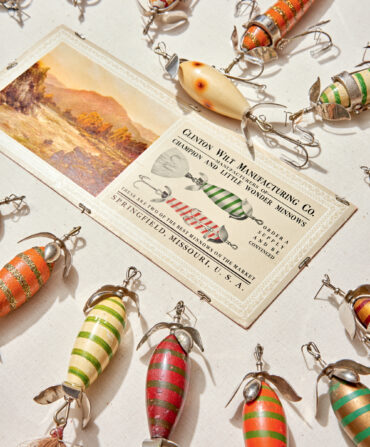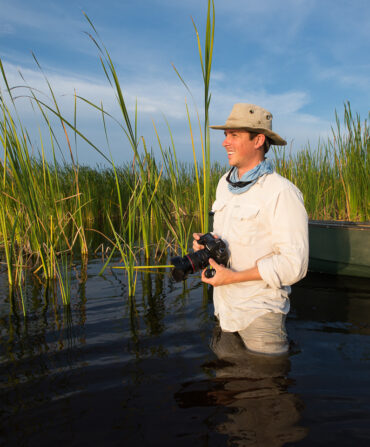When Craig Harper was a young technician in the late eighties for a state wildlife agency, he felt like little more than a professional mower. “I got on a tractor and dragged around a bush hog from May to September,” he explains. Even though it was nesting and brooding season for rabbits, songbirds, and game birds and fawning season for deer, that was the general prescription for wildlife management. Harper figured there had to be a better way to manage these types of fields, and now, as a professor of wildlife management and the extension wildlife specialist at the University of Tennessee, he’s fine-tuning the solution. Instead of endlessly plowing and planting food plots for deer, he partners with Mother Nature to foster native regrowth for maximum benefit to them.

The practice, called “old-field management,” turns former food plots, row-crop fields, and pastures into gorgeous, easily huntable, nutrient-rich areas that attract and hold deer, rabbits, butterflies, and songbirds all year long. The natural food base actually supports antler growth that can eclipse what often results from food plants and nutritional supplements. The best part: Compared with traditional food plots for deer, old-fields are easier and cheaper to establish and maintain.
Essentially, creating old-fields requires clearing out the bad stuff and giving nature a little nudge. “You simply kill the stuff you don’t want,” Harper says, “and leave the stuff you want.” By targeting fields with the right herbicide treatments, a landowner with little more than an ATV or a small tractor—or even just a backpack sprayer—can create space so that the naturally occurring seed bank in the soil will germinate and grow into a nutritious smorgasbord of food plants and provide optimal cover that can keep deer moving all day long. Plants such as blackberry, pokeweed, fleabane, and even ragweed are highly sought by deer. “People don’t understand how high in food value these native plants are,” Harper says.
While converting pastures and fallow fields takes a bit more work, to remove smothering nonnative grasses by intensive spraying, converting an existing food plot or row-crop field is much easier, and brings quicker results, because the grass layer is already gone. To start, use a broad-spectrum herbicide to zap plants such as undesirable or invasive saplings, honeysuckle, sericea lespedeza, common mullein, and any emergent fescue and Bermuda grass. Larger fields can be treated with an ATV-mounted sprayer or a small tractor with a spray gun, smaller fields with a backpack sprayer once or twice a year. And this approach involves far less chemical application than is needed for maintaining food plots, Harper points out.
During the second summer, some spraying will still be required. But by the third summer, Harper says, Mother Nature will have filled in most of the holes. Beneficial plants and shrubs will typically grow four to six feet tall, providing fawning cover in the spring, and hold deer during hunting season. Jason Hewett, owner of Private Land Management in Bluffton, South Carolina, used Harper’s techniques while he managed 15,000 acres of Clarendon Farms north of Beaufort. “In the first year, there was so much volunteer goldenrod, ragweed, and dog fennel coming up that a clutch of quail poults or a deer fawn would never be seen,” he says. “And you couldn’t count the number of songbird and pollinator species you might see.” Antler growth at Clarendon exploded.
All along, Harper says, you can fine-tune the old-field to your hunting style and preferences. If you still want to plant food sources, seed firebreaks in annual clovers, winter wheat, oats, or brassica. That will give you a pleasing green strip to watch come hunting season. You can also mow shooting lanes in the new growth. And it’s a snap to disc and plant or top-sow food plants if you’d like.
It’s also helpful to burn small sections of the field simply using a drip torch and firebreaks. An opening as small as a quarter acre is easy to create, and the young vegetation that will sprout up “will be so palatable and nutritious that deer will flock to it,” Harper says.
Many landowners will still want to consult with a local agricultural extension agent or wildlife biologist for details on herbicides, small-plot prescribed burning, and plant identification. But it takes very little training. “We have seen this approach transform field after field after field,” Harper says. “The options are so numerous that it makes it fun. People hear about this and they think, This is something even I could do. And they do it. It really is that straightforward.”








